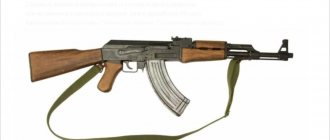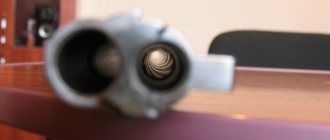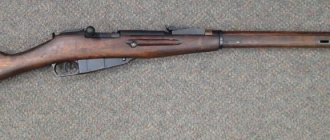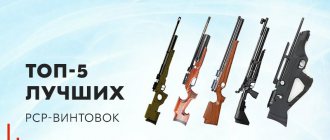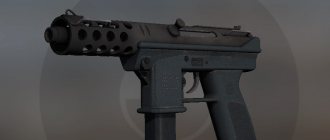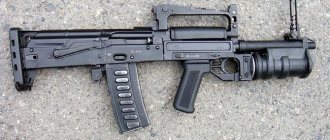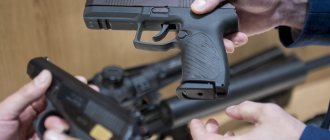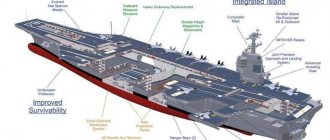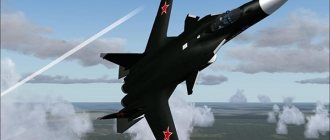History[edit]
Before Confederation in 1867, Canada was defended in wartime by the British Army, which included Canadian militia units. After 1867, the Permanent Active Militia (PAM) was formed ,
and
several decades later several formations of regular troops were created, their descendants were the Royal Canadian Horse Artillery
,
the Royal Canadian Dragoons
( English Royal Canadian Dragoons)
and the Royal Canadian Regiment.
Regular Canadian troops participated in the North West Rebellion in 1885, the South African War (Boer War (1899 - 1902)) in 1899, and in much larger numbers formed the Canadian Expeditionary Force in the
First world war.
The thorny path of Canadian special forces
The first Canadian special forces became famous during the Second World War.
However, in peacetime, the famous “black devils” ceased to exist. The command of the Canadian Armed Forces needed more than one attempt to eventually create full-fledged special forces. In their modern form, special forces appeared in Canada only at the turn of the 20th and 21st centuries.
"Black Devils"
The appearance of the first Canadian special forces is associated with one adventurous plan that arose in the spring of 1942 in the bowels of the British Combined Operations Command: to drop a large group of specially trained soldiers with snowmobiles onto the Jostedalsbreen glacier in Norway to carry out sabotage at Norwegian power plants and factories. The military greeted the project with skepticism, but politicians liked it. The United States agreed to undertake its implementation, and the British Empire was to provide half of the personnel. This was to be done at the expense of the Dominion of Canada. Thus, in July 1942, a unique special forces unit from the Second World War was born - the joint American-Canadian First Special Service Force (FSSF).
A group of FSSF fighters.
Still from the film "Black Devils", 1968. Volunteers were called into this formation - “single men aged 21 to 35 years, with at least three classes of education and experience as lumberjacks, forest rangers, hunters, rangers, prospectors, and geological prospectors.”
. Canada sent 47 officers and 699 lower ranks to the FSSF, designated in documents as the “2nd Canadian Parachute Battalion” for security purposes.
Within the FSSF, their commander, US Army Lieutenant Colonel Robert Frederick, carefully mixed Canadians with Americans to create a single, cohesive fighting unit. Frederick's deputy was Canadian Lieutenant Colonel John McQueen. Canadians: Lieutenant Colonel Jack Akehurst, Lieutenant Colonel John Williamson and Lieutenant Colonel R. Beckett - at different times commanded each of the three FSSF regiments.
The personnel underwent intensive training at a base near the town of Helena in Montana. The course included parachute, mountaineering and ski training, training in explosives and hand-to-hand combat. At bases in Virginia and Vermont, soldiers learned to land from the sea and storm enemy bunkers and fortifications.
In the summer of 1943, FSSF fighters went to Alaska to participate in the landing operation on the Aleutian Islands captured by the Japanese. On the night of August 15, the 1st and 3rd regiments successfully landed on the island of Kiska, providing bridgeheads for the main landing. But they did not have to engage in battle: the Japanese managed to secretly evacuate from the island.
The FSSF were then transferred to the Italian Front and arrived at the Bernhard Line on November 20, 1943. On December 2, the special forces entered into battle for the first time. The fighters stormed the strategic heights of Monte la Difense and Monte la Remetanea. The successful completion of a difficult combat mission confirmed the high professionalism of the unique unit.
The FSSF continued to see action in the Italian mountains until early 1944, and were then transferred to the Anzio beachhead. Including the remnants of the defeated 6615th Ranger Regiment, the special forces went behind the front lines every night, conducting reconnaissance and attacking enemy posts and patrols. It was in these parts that they received the nickname “black devils” (Die schwarzen Teufel) from the enemy: during night raids, fighters blackened their faces with shoe polish, and smeared the shiny surfaces of their weapons with soot from burnt wine corks.
A group of FSSF fighters at the Anzio beachhead.
pinterest.com
In late May and early June 1944, the FSSF moved at the forefront of the Allied advance on Rome, capturing bridges, and were among the first to enter the Eternal City. After this, the special forces took part in the landing in the south of France as part of Operation Dragoon, and in August-September they fought their way to the French-Italian border. The FSSF suffered heavy losses, but the command never ensured that they were replenished with qualified personnel. The unit was simply supplemented with ordinary officers and soldiers from other combat units, gradually losing its unique character. The logical result was the dissolution of the FSSF on December 5, 1944.
A group of FSSF fighters at the Anzio beachhead.
pinterest.com
The Canadians were assigned to the 1st Canadian Parachute Battalion. They participated in the crossing of the Rhine and on May 2, 1945 met with the Soviet allies in the German city of Wismar. Immediately after the end of the Second World War, the 1st Canadian Parachute Battalion was also disbanded.
Canadian CAC
In September 1947, a Canadian SAS (Special Air Service) company consisting of 125 soldiers was formed from veterans of the FSSF and the 1st Canadian Parachute Battalion. The unit was led by Captain Guy d'Artois, who during the war was a FSSF instructor in French boxing-savate and an agent of the British Special Operations Executive in occupied France.
A group of Canadian SAS fighters, 1948. Source:
Horn, B. Canadian Airborne Forces since 1942 / Bernd Horn, Michel Wyczynski. — Osprey Publishing Limited, 2006
The company was supposed to serve as the nucleus for organizing a parachute brigade if necessary. She had to participate in demonstrations, maneuvers, search and rescue operations and extinguishing forest fires. The very last item on the Canadian SAS mission list was to “preserve the methods used by (British) SAS personnel during the war in a peacetime army.”
.
Yet the idea of special forces has not yet taken root in the thoughts of Canadian generals. In September 1949, the Canadian SAS company was disbanded.
Canadian Airborne Regiment
A decade and a half passed before, in the spring of 1966, on the initiative of the new Chief of Staff of the Canadian Army, Lieutenant General Jean-Victor Allard, the creation of what he called the “airborne commando regiment”
, intended for action
“in a limited war in any part of the world
.
On April 8, 1968, the Canadian Airborne Regiment was officially created. Its first commander was Colonel Donald Rochester. The regiment initially consisted of 1,285 troops, but after a series of reorganizations, it was reduced to 665 by the end of the 1980s. The unit consisted of three airborne commandos (180 soldiers each), an air defense platoon and an airborne engineering platoon. The regiment was staffed exclusively by the best military personnel of the army with the rank of no lower than corporal.
Soldiers of the Canadian Airborne Regiment practice landing from the sea. Jamaica, 1972. Source:
Horn, B. Canadian Airborne Forces since 1942 / Bernd Horn, Michel Wyczynski. — Osprey Publishing Limited, 2006
The regiment was initially based at a military base in Edmonton (Alberta), and in April 1977 moved to a new military base in Petawawa in northern Ontario, 170 km from Ottawa. In addition to airborne training, the regiment's military personnel prepared for operations in the mountains and the Arctic, and for conducting reconnaissance and sabotage operations behind enemy lines. In the jungles of French Guiana, together with instructors from the French Foreign Legion, they trained to fight in the jungle, and in Texas, together with the American Rangers, in the desert. The Canadian Airborne Regiment was intended to be a force "capable of being rapidly deployed to counter any unexpected enemy threat or perform other duties of the Canadian Armed Forces."
.
For the first time, Canadian paratroopers had the opportunity to show themselves in action on their native soil. In October 1970, in the context of an acute crisis in the province of Quebec, caused by the actions of local separatists from the Quebec Liberation Front, the regiment was deployed to the capital of the rebellious province. He helped the police maintain public order, protect government facilities and arrest separatists. In the 1980s and 1990s, the regiment was involved in operations against Canadian Indians who demanded the return of their ancestral lands.
Canadian Airborne Regiment fighter in Somalia, 1993. Source:
Horn, B. Canadian Airborne Forces since 1942 / Bernd Horn, Michel Wyczynski. — Osprey Publishing Limited, 2006
In the 1970s and 1980s, members of the Canadian Airborne Regiment participated in UN peacekeeping missions in Cyprus, Namibia and Western Sahara. In December 1992, Canadians became part of the multinational peace force in Somalia. In less than three months, they achieved that the UN declared the Beledweyne zone, an area of 30,000 km², north of Mogadishu, which they controlled, safe. The press called the work of Canadian paratroopers in Beledweyne “a model of restoring peace and using military force to end anarchy.”
.
And then a scandal broke out: the fact of torture and murder of a detained Somali teenage thief by paratroopers was revealed. The subsequent series of checks revealed a lot of other ugly episodes. Most of all, the public was shocked by the sadistic initiation ceremonies into the paratroopers with obvious racist overtones. Despite the protests of the generals, on March 5, 1995, the Canadian Department of Defense disbanded the Canadian Airborne Regiment.
Canadian Airborne Regiment disbanding ceremony, 1995.
Royal Canadian Mounted Police Special Forces
The 1970s were turbulent years in Canada. The government was alarmed not only by the activities of Quebec separatists, but also by attacks on Cuban diplomatic facilities in Ottawa and Montreal, which were carried out by anti-Castro Cuban emigrants from the CIA-linked Coordination of United Revolutionary Organizations. The creation of a special anti-terrorist unit following the example of other Western countries has become a pressing issue for Canada. This task was entrusted to the famous "Mounties" - the Royal Canadian Mounted Police.
The Mounted Police Special Emergency Response Team (SERT) was formed in 1986. It consisted of about 100 police officers. A new base was built for the special forces at Dwyer Hill near Ottawa. So that the fighters could practice hostage rescue operations, the bus service handed over a passenger bus to the police, and the air service handed over a DC-9 passenger plane to the police. To assist the police special forces, the Royal Canadian Air Force provided a separate air wing B, which included three Twin Huey helicopters. Their crews have undergone special training to participate in counter-terrorism missions.
A group of SERT fighters, late 1980s.
Source: Horn, B. Shadow Warriors / Bernd Horn // Les Guerriers de l'Ombre: The Canadian Special Operations Forces Command / Le Commandement des Forces d'Opérations Spéciales du Canada. - Dundurn; Bilingual edition, 2016
In 1992, another government defense report recommended that the counterterrorism mandate be transferred to a specially created new unit consisting of "carefully selected members of all branches of the Canadian Armed Forces."
.
The main reason for this decision was public dissatisfaction with the fact that “the police are being taught to kill
.
Joint Task Force-2
On April 1, 1993, a new military unit was created, called Joint Task Force 2 (JTF2). It inherited the Dwyer Hill base from the Mounted Police Special Forces. Some SERT operatives continued to work as instructors. JTF2 was also “inherited” by a separate air wing B of the Royal Canadian Air Force.
JTF2 emblem. Source:
Horn, B. Shadow Warriors / Bernd Horn // Les Guerriers de l'Ombre: The Canadian Special Operations Forces Command / Le Commandement des Forces d'Opérations Spéciales du Canada. - Dundurn; Bilingual edition, 2016
JTF2 was not part of any branch of the armed forces and was directly subordinate to the country's Chief of Defense Staff. Initially, the group's functions included only counter-terrorism operations on Canadian soil. In 1994, JTF2's functions expanded significantly to include advising Canada's allies on security matters and protecting the country's senior officials in dangerous situations. Currently, JTF2 "is responsible for providing Canada with forces capable of providing armed assistance in resolving issues affecting national security."
. In addition to land operations, JTF2 is also tasked with maritime special operations.
JTF2 members practice landing from a Victoria-class submarine, 2000s. Source:
Horn, B. Shadow Warriors / Bernd Horn // Les Guerriers de l'Ombre: The Canadian Special Operations Forces Command / Le Commandement des Forces d'Opérations Spéciales du Canada. - Dundurn; Bilingual edition, 2016
The first time a small group of JTF2 fighters went abroad was in 1997: they participated in a mission of UN forces in Bosnia and Herzegovina to search for and arrest war criminals.
By the beginning of the twenty-first century, the group numbered 297 military personnel and was little known both in Canada and abroad. The events of September 11, 2001 changed the situation. By decision of the Ministry of Defense, unknown to the Canadian public, 40 special forces under the command of Major Mike Beaudette went to Afghanistan as part of coalition forces in early October 2001. Once again, as in World War II, Canadians participated in combat operations, including Tora Bora and Operation Anaconda, alongside their American counterparts.
At the beginning of 2002, a scandal broke out. The Globe and Mail newspaper published photographs of special forces soldiers in clearly recognizable Canadian camouflage with Taliban detainees in Afghanistan.
The same photograph of JTF2 fighters in Afghanistan, early 2002.
pinterest.com
Despite the uproar, JTF2 fighters remained in Afghanistan until the end of 2002. They later conducted operations there in 2007–2008, and operated in Libya in 2011 and in northern Iraq since 2014. During this time, one Canadian special forces soldier was killed.
JTF2 currently has approximately 350 troops in two assault squadrons, a support unit and a training unit. Persons of both sexes who have served at least two years in the armed forces or at least three years in reserve units are eligible for selection into JTF2. After successful completion of the selection and training course, a contract for four years of service is concluded.
JTF2 fighters training in the Canadian North, 2016. Source:
Horn, B. Shadow Warriors / Bernd Horn // Les Guerriers de l'Ombre: The Canadian Special Operations Forces Command / Le Commandement des Forces d'Opérations Spéciales du Canada. - Dundurn; Bilingual edition, 2016
The assault squadron includes about 100 troops, divided into four groups. Each has its own combat specialization: counter-terrorism, reconnaissance and sabotage, sniper and combat swimmers. In the field, groups operate in teams of 6–8 people.
JTF2 soldiers guard Canadian Prime Minister Stephen Harper, 2013.
JTF2 fighters confirm the established reputation of Canadians as excellent marksmen. In June 2022, a JTF2 sniper in Iraq set a new world combat range record of 3,540 meters.
JTF2 sniper in Afghanistan.
Source: Horn, B. Shadow Warriors / Bernd Horn // Les Guerriers de l'Ombre: The Canadian Special Operations Forces Command / Le Commandement des Forces d'Opérations Spéciales du Canada. - Dundurn; Bilingual edition, 2016
Canadian Special Operations Regiment
The Canadian Special Operations Forces Command (CANSOFCOM) was created in February 2006. Subordinate to him was the Canadian Special Operations Regiment (CSOR), formed on August 13 of the same year, similar to the US Army Rangers. It is based at the Petawawa base - the former “home” of the airborne regiment. In addition to supporting JTF2, the regiment is designed to perform a wide range of special operations. It is staffed by military personnel from all three branches of the military, who, after passing a difficult selection course, enter into a contract for three years.
The head of the Canadian Special Operations Command, Major General Michel Rouleau, inspects the CSOR, 2022.
The regiment consists of approximately 650 troops, divided into three direct action companies and a support company.
A CSOR fighter with Kurdish militias in northern Iraq, 2016. Source:
Horn, B. Shadow Warriors / Bernd Horn // Les Guerriers de l'Ombre: The Canadian Special Operations Forces Command / Le Commandement des Forces d'Opérations Spéciales du Canada. - Dundurn; Bilingual edition, 2016
During 2006–2014, when Canada participated in operations in Afghanistan, one of the CSOR companies was part of the Canadian contingent. Since 2014, CSOR soldiers have been involved in operations in Iraq. CSOR represents Canada in military cooperation programs with various Latin American and African countries.
A CSOR fighter climbs to the top of Monte la Difense, 2016. Source:
Horn, B. Shadow Warriors / Bernd Horn // Les Guerriers de l'Ombre: The Canadian Special Operations Forces Command / Le Commandement des Forces d'Opérations Spéciales du Canada. - Dundurn; Bilingual edition, 2016
The regiment is officially the successor to the FSSF and bears on its emblem the V-42 dagger, which was the standard weapon of the Canadian Special Forces of the Second World War. Modern Canadian special forces use a light battle hatchet, traditionally called a tomahawk.
Vadim Treshchev
/
Special forces in the service of South Africa
The history of creation and the battle path of Recca: not to be afraid of crocodiles, get your hands on oil facilities and be reborn after disbandment
- modernity
- intelligence services
- Africa
Vadim Treshchev
/
Special forces of the heirs of the Incas
Creation and main milestones in the history of Peruvian special forces
- modernity
- intelligence services
- Latin America
Andrey Ulanov
/
Loud heirs of the quiet special forces
"Thunder" is the most famous unit of the Polish Special Operations Forces
- modernity
- intelligence services
- the best
- Poland
Literature:
- Bercuson, D. The Fighting Canadians: Our Regimental History from New France to Afghanistan / David Bercuson. — Harper Collins Publishers, 2008.
- Day, SJ 9/11 And Canadian Special Operations Forces: How '40 Selected Men' Indelibly Influenced The Future Of The Force / Stephen J. Day. — Tannenberg Publishing, 2014.
- Horn, B. Canadian Airborne Forces since 1942 / Bernd Horn, Michel Wyczynski. - Osprey Publishing Limited, 2006.
- Horn, B. Shadow Warriors / Bernd Horn // Les Guerriers de l'Ombre: The Canadian Special Operations Forces Command / Le Commandement des Forces d'Opérations Spéciales du Canada. - Dundurn; Bilingual edition, 2016.
- Marquis, G. The Vigilant Eye: Policing Canada from 1867 to 9/11 / Greg Marquis. — Fernwood Books Ltd, 2016.
- Nadler, J. A Perfect Hell: The Forgotten Story of the Canadian Commandos of the Second World War / John Nadler. — Anchor Canada, 2006.
- Ogle, J. What Manner of Man: Darnell Bass and the Canadian Airborne Regiment / James Ogle, Darnell Bass. — General Store Publishing House, 2006.

